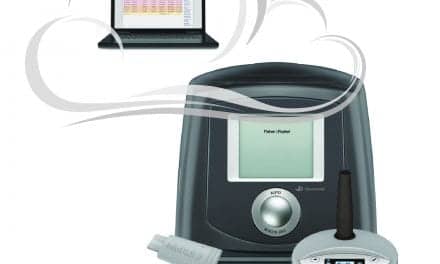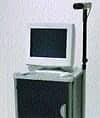Terry Murphy, Sleep Review’s former Expert Insight section contributor on polysomnography, answers reader questions about patient/technician ratios, patients with fibromyalgia, and the importance of bio-cals at the end of a sleep study.

Q: How many patients can a sleep tech perform studies on in a single night?
Murphy: The AASM announced early in 2011 that a ratio of 3:1 patient-to-tech was acceptable under certain circumstances. However, shortly thereafter, they backed off of that position due to strongly negative feedback from both the tech and physician community. Your lab may still choose to use this ratio under the current guidelines as the language is somewhat ambiguous. Most labs will subscribe to the 2:1 ratio and 1:1 in infant/pediatric studies.
Q: Medicare allows scoring for sleep apnea to include the AHI or RDI, yet they are very different, with RDI always equal to or higher than AHI by definition. Furthermore, every lab seems to score RERAs (component of RDI) differently. Is there any national consensus on what to use to score for sleep apnea? In my estimation, using RDI would include many patients for potential CPAP who would not qualify using AHI.
Murphy: You are absolutely correct that AHI and RDI are very different. The Apnea/Hypopnea Index is the number of episodes per hour of sleep time with sleep time being defined by the use of the EEG/EMG/EOG channels. Respiratory Disturbance Index is the number of episodes per hour of recorded time as there is no EEG/EMG/EOG to define the actual time the patient slept.
CMS weighed in on this issue by stating that only Level I and Level II devices could be used to calculate and report an AHI as they record EEG/EMG/EOG. Level III and Level IV devices could only report RDI. This distinction affects reimbursement codes. In spite of this unequivocal declaration by CMS, many companies—both diagnostic and therapeutic—continue to misuse these terms and tend to overstate their ability by reporting AHI when they should be reporting RDI.
Q: In patients with fibromyalgia, how much does alpha-delta sleep or alpha intrusion on delta waves help correlate with the disorder?
Murphy: This is a great question and addresses an issue that is often missed by many clinicians. In patients with fibromyalgia who are aerobically challenged, a high percentage reveal alpha intrusion into their delta sleep. Since delta sleep is when the body produces 80% of its growth hormone—and this hormone is responsible for maintaining bone density and muscle mass—a reduction in delta sleep is believed to be directly related to the pain found in fibromyalgia.
An excellent and much more complete exposition on the subject can be found on the National Fibromyalgia Foundation’s Web site in a presentation by Dr Martin Scharf, titled “Fibromyalgia and the Challenge of Sleep.”
Q: What is the best lead configuration to monitor a vagal nerve simulator, used for nonpharmacological treatment of seizure disorder and depression, during a PSG to determine simulator-induced hypopneas or apnea?
Murphy: I asked our Clinical Educator at Embla, Belinda Gray, for assistance in answering your question. It is known that vagal nerve stimulators (VNS) can cause decreases in respiratory flow and can increase the AHI of patients with sleep apnea. The pacemaker-like pulse generator is generally implanted under the skin on the chest or armpit and attached electrodes are wrapped around and linked to the left vagal nerve.
Monitoring patients in the sleep lab with VNS would not require any additional leads or configuration since the main focus would be on the respiratory patterns of the patient. It would be important to note whether the VNS is off/on during the sleep study and, if available, provide information about the frequency or strength of the VNS.
Q: If you have intermittent arousals that cause a desaturation directly after, do you still score the hypopnea after it?
Murphy: When approaching decisions about the relationship between events, the best place to start is to consider the rules outlined in the AASM Manual for Scoring of Sleep and Associated Events and to treat the events individually and consistently in accordance to the policies and protocols established for your lab.
If your lab is using the recommended hypopnea rule, you can score the hypopnea if the nasal pressure or alternative sensor signal drops >30% of baseline, lasts for 10 seconds, and has a 4% desaturation.
The alternative hypopnea rule states the signal being used to score hypopneas (nasal pressure or alternative hypopnea sensor) will drop by >50% of baseline, will last 10 seconds, and will have a >3% drop in saturation from pre-event baseline OR be associated with an arousal event. The rule does not specify that the arousal event must follow the hypopnea; however, in 1999, the American Academy of Sleep Medicine Task Force published “Sleep-Related Breathing Disorders in Adults: Recommendations for Syndrome Definition and Measurement Techniques in Clinical Research” in Sleep, Vol 22, No. 5, describing a definition of hypopnea that is terminated with an arousal, which is how many labs would treat the scenario you describe if they were scoring hypopnea using the alternative rule.
Q: Why is it necessary to do bio-cals at the end of the sleep study, or is it? Patients usually need to go to the restroom when they first wake and some have trouble waiting.
Murphy: I certainly understand your patients’ desire to heed the call of nature when they awaken. The purpose of performing the bio-cals at the end of a study, however, is to provide potentially important information and that makes the wait worth the discomfort. The bio-cals at the beginning of a study provide you with a reference standard to compare various physiological signals and artifacts to questionable signals you may see during the recording. Since things change during the course of 6 or 8 hours (impedance changes, belts move, cannulas and thermistors may shift), it is valuable to know what the bio-cals look like at the end of the study as compared to the beginning.
To help ease your patients’ burden, try to be ready to do the bio-cals as soon as the sleep period ends. This is not always easy with a lab full of patients waking up at the same time, but it is certainly appreciated.




